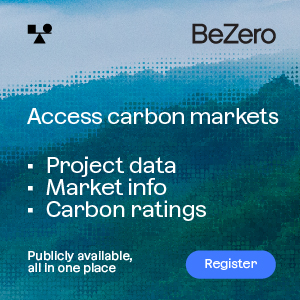The EU and China are seeking to deepen cooperation on carbon markets as part of a wider pact due in July, but the pair have limited options as Europe’s scheme remains massively oversupplied and China wrestles a tight timetable for creating its own.
Speculation is mounting that the two are preparing to ratchet up their collaboration ahead of a planned EU-China summit in Brussels in July that will mark the 40th anniversary of cooperation.
Senior EU climate policy officials Jos Delbeke and Artur Runge-Metzger have both visited China for talks recently, and earlier this month EU foreign policy chief Federica Mogherini made the trip to meet her Chinese counterpart Yang Jiechi.
Mogherini told journalists she was sure China and the EU “will be able to agree on a common approach (on climate change) which can contribute to the success of the negotiations in Paris and show a common stance on this very important global issue.”
But observers are dismissing the chance of any efforts before 2020 to link what will be the world’s two biggest carbon markets, even if China completes its plan to launch a national scheme next year.
“It would be a big surprise if linking was the outcome (of the July pact),” said Kornelis Blok of Dutch consultancy Ecofys, one of the firms involved in a three-year EU-China ETS capacity building project.
The ETS-related part of diplomacy efforts has been on how to prolong that project, which is due to expire in December 2016.
“The Commission is considering, in cooperation with the Chinese partners, to further enhance and extend this cooperation,” a Commission spokeswoman told Carbon Pulse.
“The EU is convinced that carbon pricing is a key tool to move towards a low carbon and energy efficiency economy and that carbon markets have proven to be a cost effective climate policy tool.”
PROLONGING SUPPORT
US consultancy ICF has led work under the €5 million contract – part of a wider EU-funded project on low carbon – to advise China on implementing its regional pilot ETSs and designing the national one.
Project participants have trained around 500 Chinese officials, company representatives, verifiers and academics on how to set standards for monitoring emissions and how to report output.
“The EU’s work has been positive and a lot of it is work that needs to be done quietly,” said Jeff Swartz at carbon trading association IETA, which has its own outreach programme with current and potential Chinese market participants.
With China’s seven regional pilot schemes now operational, there are fewer technical issues that the EU could usefully help to resolve after the project ends at the end of 2016.
But EU officials are reluctant to scale back one of the bloc’s most notable diplomatic links just as climate diplomacy is peaking ahead of the year-end UN climate summit to agree a global pact that would incorporate all nations from 2020.
“The EU is asking what specific support China would need after 2017. The European Commission wants to continue the support. They don’t want to drop the ball just after the national market has launched,” said a source close to the process who asked not to be named as they were not authorised to speak to the press.
“They might be talking about linking on a generic level, but the discussions are more specifically about how to make China’s ETS successful in the 2017 to 2020 period,” they added.
LINKING LITE
While Chinese officials and experts have dismissed any talk of linking its national market to any other ETS until after 2020, the EU has long said it is open to connecting its ETS to further the bloc’s ultimate aim of a global carbon market that can achieve emission reductions at lowest cost.
EU ETS companies were by far the biggest buyers of the 900 million CERs issued from Chinese projects, the development of which has been widely touted as kickstarting China’s enthusiasm for carbon markets.
But this indirect link has tapered off in recent years as the EU has struggled to tackle a massive permit oversupply equivalent to more than a year’s worth of emissions in the 28-nation bloc, dampening any prospect of allowing additional offsets to be imported into the EU ETS.
“China’s market would be two-to-three times the size of the EU ETS, so the EU is probably wary about the impact of linking. The EU is very cautious on what the impact would be on industry as well,” said Ecofys’ Blok.
Still, there are other options for the markets to converge without fully linking, such as setting smaller permit usage limits compared to those for the CDM or allowing carbon units to flow in just one direction, Blok added.
He said that it was also possible for the two trading partners to align their ETS rules more closely on issues, such as allocation methods and which sectors are covered, to effectively attempt to set a wider standard for emission trading worldwide.
“If the EU and China are able to prepare at least for connecting, that would be the global standard because the emissions coverage is so big.”
By Ben Garside and Stian Reklev – ben@carbon-pulse.com



